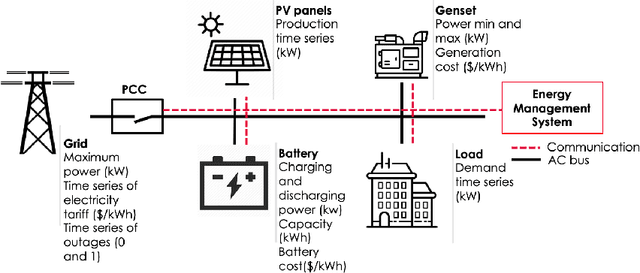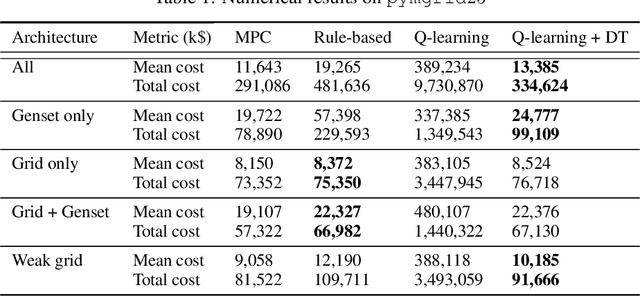Gonzague Henri
pymgrid: An Open-Source Python Microgrid Simulator for Applied Artificial Intelligence Research
Nov 11, 2020

Abstract:Microgrids, self contained electrical grids that are capable of disconnecting from the main grid, hold potential in both tackling climate change mitigation via reducing CO2 emissions and adaptation by increasing infrastructure resiliency. Due to their distributed nature, microgrids are often idiosyncratic; as a result, control of these systems is nontrivial. While microgrid simulators exist, many are limited in scope and in the variety of microgrids they can simulate. We propose pymgrid, an open-source Python package to generate and simulate a large number of microgrids, and the first open-source tool that can generate more than 600 different microgrids. pymgrid abstracts most of the domain expertise, allowing users to focus on control algorithms. In particular, pymgrid is built to be a reinforcement learning (RL) platform, and includes the ability to model microgrids as Markov decision processes. pymgrid also introduces two pre-computed list of microgrids, intended to allow for research reproducibility in the microgrid setting.
Activity Detection And Modeling Using Smart Meter Data: Concept And Case Studies
Oct 26, 2020



Abstract:Electricity consumed by residential consumers counts for a significant part of global electricity consumption and utility companies can collect high-resolution load data thanks to the widely deployed advanced metering infrastructure. There has been a growing research interest toward appliance load disaggregation via nonintrusive load monitoring. As the electricity consumption of appliances is directly associated with the activities of consumers, this paper proposes a new and more effective approach, i.e., activity disaggregation. We present the concept of activity disaggregation and discuss its advantage over traditional appliance load disaggregation. We develop a framework by leverage machine learning for activity detection based on residential load data and features. We show through numerical case studies to demonstrate the effectiveness of the activity detection method and analyze consumer behaviors by time-dependent activity modeling. Last but not least, we discuss some potential use cases that can benefit from activity disaggregation and some future research directions.
 Add to Chrome
Add to Chrome Add to Firefox
Add to Firefox Add to Edge
Add to Edge